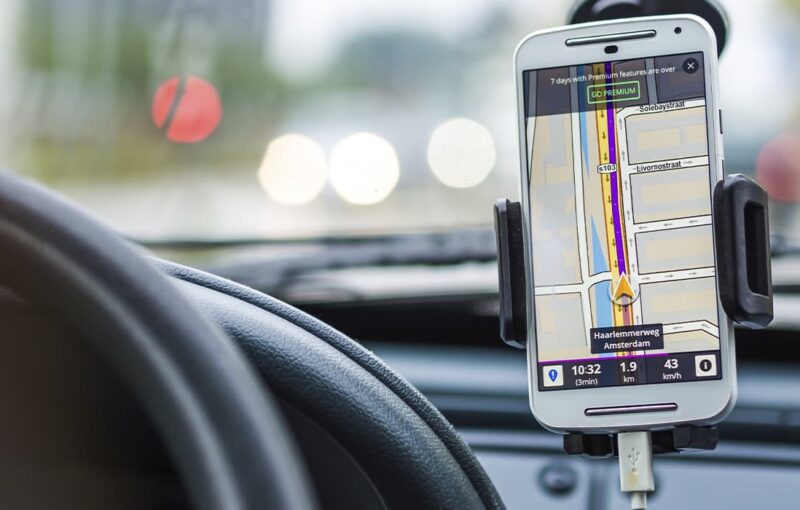The main functions of the car GPS navigator are navigation functions, namely: determining the current location of the vehicle and its display on the map; planning and routing; route editing; tracking the correctness of the route and informing the user in case of deviation from it; information support of the user on the route; etc.
Function “Planning and routing”.
The navigation software has a function for planning and laying out your forthcoming route. It allows you to create a route in two main ways:
- 1. On “Map” page. All you have to do is to indicate a destination point on the map and the program will automatically create the shortest and most convenient route to it from your current location to the selected point.
- 2. Via search functionality. While creating the route by the second method, the user can find the needed object which should be the destination point according to different conditions:
by address;
by reference points;
on the map from any one selected point to any other;
by the name of the waypoint;
in a list of the history of a choice once made;
in the “Favorites” list;
by manually entered or copied coordinates;
Edit Route” function
Automatically created by the navigator program, the route can be edited, changing it completely or separate parts, adding new waypoints and deleting irrelevant ones.
Function “Tracking the correctness of the route”
When the car starts to move from the starting point, GPS navigator starts to track the correctness of the route and in case of deviation from it informs the driver about the deviation. If the driver is “off the route” for any reason, he can choose how the GPS navigator should act in this situation – to “re-route” the route (in this case, the device will create a new route, automatically rebuilding the path to the previously set destination) or to stop driving on the route.
Audible Warning” Function
If the “Beep” function is turned on, the navigator notifies the driver of certain events. For example, about the beginning of the route, passing of the waypoints, completion of the route, entering the coverage area and approaching a radar, etc.
Function “Voice guidance along the route and intellectual system of voice prompts”.
Voice guidance improves your driving comfort and safety. With voice guidance turned on, the driver does not need to take his eyes off the road and follow the changes on the navigator’s display. Intelligent system of voice prompts itself will tell you the name of the street on which you are currently driving, warn of the upcoming turn and prompt when to change lanes, a warning of danger, exceeding the permitted speed, approaching a railway crossing, humps, etc.
Trip Computer” function
The Trip Computer function is, in fact, an extended and supplemented with GPS navigation capabilities, analogous to the car onboard computer. Depending on the settings you make, the trip computer is able to calculate, control and display a variety of navigation and system parameters.
Track-Back function
While navigating a route, the navigation software records the coordinates of waypoints as a chronological sequence. These chronological sequences of waypoints are called tracks. The tracks allow the GPS navigator user to return to the point of destination by using the “Track-Back” function and follow the route already covered.
Other functions
The story about GPS-navigators would be incomplete, if we would disregard other “non-navigation” functions, existing in these devices, so below we will briefly talk about them.
The function of wireless connection with other devices. One of the advantages of modern navigators is Bluetooth. With Bluetooth (via SDIO or CFIO-Bluetooth modules), a navigator can be connected to a laptop for downloading the data you need or to a cell phone. If paired with a Bluetooth cell phone, the navigator, in the absence of a built-in GSM / GPRS module, is able to access the Internet as well as in its presence. The ability of the navigator to access the Internet is of great importance.
